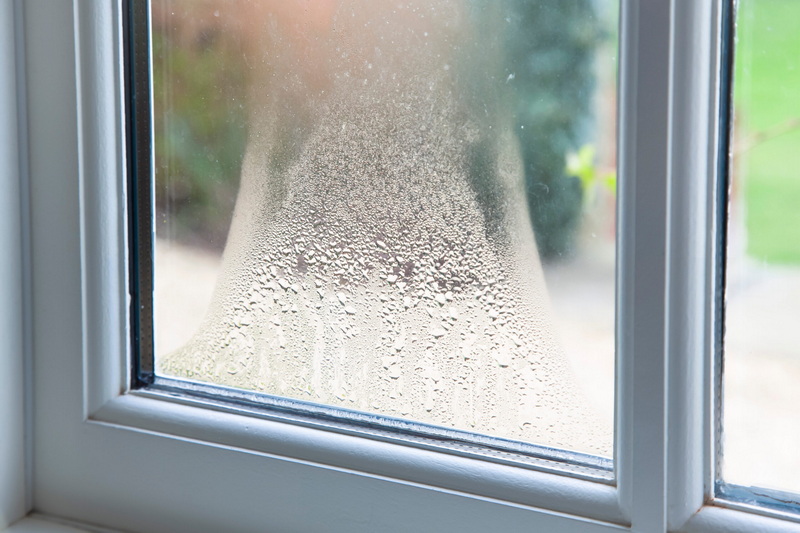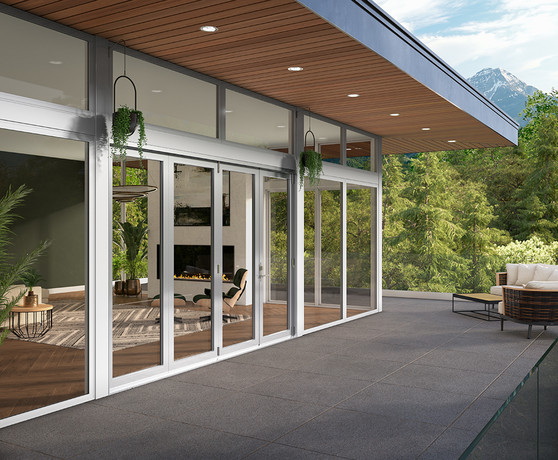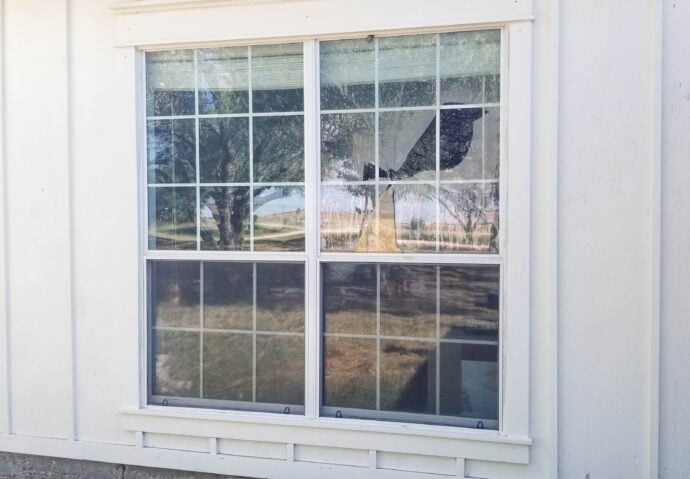English


Views: 222 Author: Dream Publish Time: 2025-01-20 Origin: Site











Content Menu
● Understanding Aluminum Foil's Properties
>> Reflectivity and Emissivity
● Benefits of Using Aluminum Foil on Windows
● How to Apply Aluminum Foil on Windows
● Potential Drawbacks of Using Aluminum Foil
● Alternatives to Aluminum Foil
● Real-Life Applications and Case Studies
>> Case Study: Energy Savings in Hot Climates
>> Privacy Solutions in Urban Areas
● FAQ
>> 1. Can aluminum foil really keep heat out?
>> 2. Is it safe to use aluminum foil on double-pane windows?
>> 3. How long does aluminum foil last when used on windows?
>> 4. Does covering windows with aluminum foil block natural light?
>> 5. Are there any risks associated with using aluminum foil?
Aluminum foil, a common household item, has gained popularity as an innovative solution for various home-related problems, particularly in managing temperature and light through windows. This article explores the multifaceted uses of aluminum foil on windows, detailing its benefits, application methods, potential drawbacks, and additional insights into its effectiveness and alternatives.

Aluminum foil is a thin sheet of aluminum that is highly reflective and has low emissivity. This means it can effectively reflect radiant heat while absorbing minimal heat itself. These properties make it an ideal candidate for use on windows to control indoor temperatures.
The reflectivity of aluminum foil is around 80-90% for visible light and can be as high as 95% for infrared radiation. Its low emissivity means that it does not radiate heat back into the room effectively, making it a useful barrier against heat transfer.
Aluminum is also a good conductor of heat; however, when used as a foil, its thinness allows it to act more as a barrier than as a conductor. This property is essential when considering its application on windows to minimize heat gain during summer months.
Using aluminum foil on windows offers several advantages:
- Heat Reflection: Aluminum foil reflects up to 95% of infrared radiation, preventing heat from entering your home during hot weather. This can significantly reduce indoor temperatures and lower air conditioning costs.
- Light Control: It acts as an effective blackout material, blocking out sunlight entirely. This is particularly beneficial for light-sensitive individuals or those who work night shifts.
- Privacy Enhancement: Foil can obscure visibility from the outside, providing a level of privacy without the need for expensive window treatments.
- UV Protection: Aluminum foil helps block harmful UV rays that can fade furniture and damage indoor plants.
- Cost-Effective Solution: Compared to specialized window films or shades, aluminum foil is a budget-friendly option that can be easily applied and removed.
Using aluminum foil can lead to substantial energy savings over time. By reducing the need for air conditioning during hot months, homeowners may notice a decrease in their electricity bills. In fact, studies have shown that reflective window treatments can reduce energy consumption by up to 30% in some cases.
By lowering energy consumption, using aluminum foil can also have positive environmental implications. Reduced energy use means less reliance on fossil fuels for electricity generation, contributing to lower greenhouse gas emissions.
Applying aluminum foil to your windows is a straightforward process. Here's a step-by-step guide:
- Heavy-duty aluminum foil
- Measuring tape
- Scissors or utility knife
- Painter's tape or duct tape
- Cardboard (optional for added insulation)

1. Measure Your Windows: Use the measuring tape to determine the height and width of each window you plan to cover.
2. Cut the Aluminum Foil: Cut pieces of aluminum foil slightly larger than your window measurements to ensure full coverage.
3. Prepare the Window Surface: Clean the window surface thoroughly to remove any dust or debris that could hinder adhesion.
4. Apply the Foil:
- If using cardboard for added insulation, cut it to fit the window frame and cover it with aluminum foil.
- Spray a light mist of water on the window (if applying directly) to help the foil stick better.
- Press the shiny side of the aluminum foil against the window glass or cardboard.
5. Secure with Tape: Use painter's tape or duct tape around the edges to hold the foil in place securely.
6. Trim Excess Foil: If necessary, trim any excess foil around the edges for a neat appearance.
7. Check Stability: Ensure all edges are securely taped down and that there are no gaps where heat could enter.
While there are many benefits to using aluminum foil on windows, there are also some potential drawbacks:
- Aesthetic Concerns: The appearance of aluminum foil may not be appealing to everyone, as it can look unkempt from the outside.
- Thermal Stress Risks: Applying aluminum foil on the inside of double-pane windows can trap heat between the glass layers, leading to potential cracking or damage. It is recommended to apply it externally whenever possible.
- Residue Issues: Some users report sticky residue left behind after removing the foil, which may require additional cleaning efforts.
Using aluminum foil over an extended period may lead to wear and tear on window frames due to moisture accumulation if not properly ventilated. It's essential to monitor conditions regularly and remove the foil if necessary.
If aluminum foil does not meet your needs or preferences, consider these alternatives:
- Reflective Window Films: These specialized films can offer similar benefits without compromising aesthetics. They come in various designs and levels of reflectivity.
- Blackout Curtains: For those seeking light control without using foil, blackout curtains provide an elegant solution that enhances room decor while blocking light effectively.
- Solar Shades: These shades are designed specifically to block UV rays while allowing some natural light into your home without sacrificing visibility or style.
For those interested in DIY solutions beyond aluminum foil:
- Consider using reflective mylar sheets available at craft stores; they offer similar properties but may come in more visually appealing designs.
- Use insulated curtains or thermal blinds that provide energy efficiency while maintaining aesthetics.
Many homeowners have successfully implemented aluminum foil solutions in their homes with varying degrees of success:
In regions with extreme summer temperatures, such as Arizona or Texas, homeowners have reported significant reductions in cooling costs after applying aluminum foil over their windows. One family noted a decrease in their monthly electricity bill by nearly 20% after installing this simple solution during peak summer months.
Urban dwellers often face challenges with privacy due to close proximity to neighbors or busy streets. Many have turned to aluminum foil as an inexpensive way to obscure visibility while maintaining natural light during daytime hours.
Aluminum foil serves as a versatile tool for improving energy efficiency in homes by reflecting heat away from windows and providing privacy and light control. Its low cost and ease of application make it an appealing option for many homeowners looking for temporary solutions during hot weather. However, it's essential to consider aesthetic preferences and potential drawbacks before implementation.

Yes, when applied correctly with the shiny side facing outward, aluminum foil effectively reflects radiant heat away from your home.
It is generally safe if applied externally; however, applying it on the inside may cause thermal stress and potential cracking.
Aluminum foil typically lasts several weeks depending on weather conditions; heavy-duty varieties may last longer than standard kitchen-grade options.
Yes, covering windows entirely with aluminum foil will block natural light unless partially covered or used in combination with other materials like cardboard or fabric shades.
While generally safe when applied externally, improper application (especially inside) could lead to thermal stress on glass panes; additionally, some users report sticky residue left behind after removal.
[1] https://www.reddit.com/r/DIY/comments/14xf1nx/would_it_be_bad_if_i_covered_my_window_with/
[2] https://www.housedigest.com/1360647/aluminum-foil-lining-windows-mistake/
[3] https://foilingservices.co.uk/why-do-people-use-aluminium-foil-on-their-windows/
[4] https://www.chaluminium.com/top-8-functions-of-aluminum-foil-on-windows
[5] https://www.youtube.com/watch?v=BKsFHOa4Mfc
[6] https://unsplash.com/s/photos/aluminum-foil
[7] https://www.weiye-aluminium.com/how-to-put-aluminum-foil-on-windows.html
[8] https://www.tomsguide.com/opinion/i-just-beat-the-heat-with-a-dollar2-roll-of-aluminum-foil-heres-how
[9] https://www.idealhome.co.uk/house-manual/home-energy/kitchen-foil-on-windows
[10] https://www.youtube.com/watch?v=UDcvB5selMQ
[11] https://boards.straightdope.com/t/aluminum-foil-breaking-windows/585096
[12] https://www.gm-cx.com/news/Aluminum-Foil-on-Windows-Pros-and-Cons.html
[13] https://www.youtube.com/watch?v=UDcvB5selMQ
[14] https://www.youtube.com/watch?v=ac19L5iPnZE
[15] https://www.weiye-aluminium.com/how-to-put-aluminum-foil-on-windows.html
[16] https://alfipa.com/articles/insulation-with-aluminium-foils/
[17] https://www.facebook.com/groups/221083762581351/posts/571064630916594/
[18] https://chemistry.stackexchange.com/questions/104753/aluminium-foil-on-windows-what-is-the-residue-and-how-to-remove-it
[19] https://www.reddit.com/r/DIY/comments/14xf1nx/would_it_be_bad_if_i_covered_my_window_with/
[20] https://www.kingchuanpackaging.com/exploring-aluminum-foil-unexpected-uses-health-effects-and-suggestions-for-reducing-harm/
[21] https://www.youtube.com/watch?v=0tWXuCNYJe8
[22] https://www.pinterest.com/pin/451626668862422529/
[23] https://www.tiktok.com/discover/tin-foil-on-your-windows
[24] https://www.tiktok.com/@indigoroad/video/7393938620979121441
[25] https://www.tiktok.com/@aliciaparga1/video/7140407201281215787
[26] https://www.tiktok.com/discover/aluminum-foil-on-windows-for-summer
[27] https://www.facebook.com/YoungAndHandsomeMY/videos/sunfoil-diy-in-5-minutes/1756115548053382/
[28] https://www.linkedin.com/pulse/20-most-questions-you-want-know-aluminum-foil-insulation-camille-yang-y4upc
[29] https://www.fuelly.com/forums/f22/aluminum-foil-on-windows-9051.html
[30] https://www.king5.com/article/news/verify/weather-verify/aluminum-foil-windows-cool-heat-wave/536-69a28e6f-0cef-4ae4-a730-fb29e42733a6
[31] https://www.tiktok.com/discover/how-to-apply-aluminum-foil-on-windows
[32] https://www.gettyimages.hk/%E5%9C%96%E7%89%87/window-foils?page=4
[33] https://www.housedigest.com/1360647/aluminum-foil-lining-windows-mistake/
Seven Requirements for External Doors And Windows of Passive Rooms
How Much Do You Know about The Design Standards for Aluminum Alloy Door And Window Dimensions?
Welding Vs Stainless Steel Fabrication: Understanding The Manufacturing Process Differences
Stainless Steel Fabrication Vs Powder Coated Steel: Durability And Cost Comparison
CNC Machining Vs Stainless Steel Fabrication: Pros And Cons for Industrial Use
Stainless Steel Fabrication Vs Carbon Steel Fabrication: Key Differences Explained
Stainless Steel Fabrication Vs Aluminum Fabrication: Which Is Right for Your Project?
Stainless Steel Grades 201 Vs 304: Cost Vs Performance Breakdown
316L Vs 316 Stainless Steel Grades: Which Is Better for Corrosion Resistance?
Comparing Austenitic Vs Martensitic Stainless Steel Grades: What You Need To Know?
